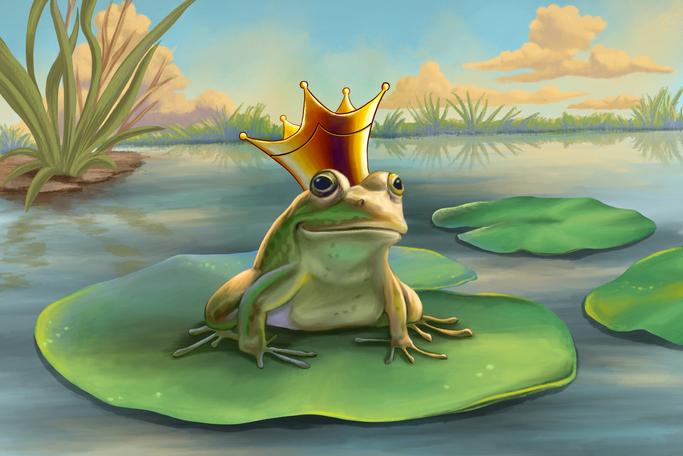The world of higher education philanthropy has changed significantly in recent years. Donations have slowed on some fronts, and donors are increasingly interested in programmes that have real-world impact, data shows. They want their funding to be used to solve Big Issues, including enhancing human physical and mental health, meeting environmental challenges, advancing science and technology, and using advanced data-driven capabilities such as artificial intelligence to improve the lives of people around the world.
One way that universities, especially in countries where they are heavily reliant on philanthropy – including the US, where I received my degrees, and Israel, where I now work – can tap into this trend is by establishing programmes to support academic spin-offs and translational research that could produce technologies to solve global challenges. This can require a shift in the way that universities typically work with donors. But rethinking relationships with donors is essential for continued funding towards important research, as well as keeping institutions of higher education relevant in a fast-changing world.
The challenges for institutions of higher learning include falling enrolment because of demographic changes and high tuition fees, as well as competition for talent and funding from the private sector. These challenges affect institutional fundraising. In 2023, contributions from individual non-alumni donors in the US fell 10.5 per cent over 2022 levels, while alumni contributions fell 11.1 per cent over the same period. Meanwhile, donations from institutional backers such as organisations, corporations and foundations have remained flat since 2022. As the challenges with enrolment and faculty brain drain are set to worsen, funding will probably continue to be a challenge.
- Read more: how exactly does research get funded?
- Philanthropists, governing boards and faculty must play active roles in university governance
- Resource collection: what innovation needs to thrive in higher education
Those individuals and institutions that continue to donate are being more discerning, conscious of impact and expect to be more involved in the projects they fund; in my experience, they want their money to go towards more than just a name on a building. Donors are increasingly interested in being part of an ecosystem that actively helps turn ideas into tangible innovations and solutions that change the world. Indeed, a list of the top US university and college donations in recent years – including contributions of up to a billion dollars – shows a clear trend. A large portion of those donations went to programmes that marry advanced tech, such as AI, with biology, chemistry, medicine and other science-related areas.
A good example is a $500-million (£381-million) donation by Mark Zuckerberg and Priscilla Chan to Harvard University for the development of an institute to advance research in AI and neuroscience. And they are not alone. Leonard A. Lauder, chairman emeritus of the Estée Lauder Companies, gave $5 million to the University of Arizona Cancer Center to advance clinical and translational research on ovarian cancer – the cancer that took his wife Evelyn in 2011. Virginia Commonwealth University recently received a $16 million gift from longtime benefactor C. Kenneth Wright for two endowed chairs “so that new discoveries can be made and new treatments can be developed” in a variety of medical and biotechnology areas. And in 2021, the Wadhwani Foundation, chaired by American-Indian billionaire Romesh T. Wadhwani – which works with institutions to develop programmes in AI and biotechnology – made a large donation to the University of North Dakota for creation of an endowed chair in translational research to “reduce the time often required to ‘translate’ novel discoveries in the laboratory to the direct care of patients in the clinic, whether in the form of new pharmaceuticals or other therapeutics”.
Universities are increasingly realising that translational science programmes better succeed at making real-world impact when the needs of the end user, as well as commercial possibilities, are considered early on in the research. This can be done through in-house programmes that oversee the translating of research to real-world solutions, treatments or products.
The Zimin Institute for AI Solutions in Healthcare at Technion Israel Institute of Technology provides the funding to chaperone a university’s most promising researchers with the funding, know-how and resources needed to bring their ideas to life. The foundation has also established this model at Arizona State University (focused on smart cities) and Tel Aviv University (biomedical devices). The Zimin institutes also build the bridges to partner with external organisations, introducing the academic innovators early to end users and partners so that innovation is honed to ultimate needs. The US National Center for Advancing Translational Sciences (NCATS) offers guidance to universities on how to build translational science programmes – and how to connect with supporters seeking to advance solutions. Many universities have partnered with NCATS to develop their translational science programmes.
When seeking out or working with donors to these types of programmes, universities need to be prepared to work with them as partners, similar to how start-ups work with venture capitalists and other investors. These philanthropists want visibility into what research is happening, plans for how it will reach the consumer or commercial market, and reports on progress. Philanthropists active in this field will want to work closely with academic administrators and department heads and may help make connections or be involved in connections the university makes with private-sector partners who can bring solutions to market.
Working in such a way can be challenging at first, because it is a shift in culture, and some researchers may feel their academic freedom is at risk. But as long as the projects are well defined and focused, and the goals are clear, this should not be the case. The best way to deal with these potential challenges is to carefully define the scope of the funded work at the beginning of the relationship, as best as possible, and to stay in regular communication about progress of the research. Both universities and the funding organisations should understand that things may happen along the way, in the course of the research, that require a change of plans or even an adjustment of goals.
While philanthropists don’t take a cut of revenue or profit resulting from commercialisation, often the entrepreneurs who profit from companies that started with academic research will reinvest earnings back into charitable initiatives that fund or promote science. In addition, the success of translational programmes and the awareness about the real-world impact of science can feed back into encouraging funding for early-stage basic research, for which direct funding has become more difficult.
Although basic science may start through intellectual curiosity or pure academic pursuit, in today’s world, this is often no longer enough to draw funding. But by directing at least some promising research towards issues that have stumped the world and working with the appropriate partners to bring those solutions to market, university science programmes can become promising vehicles for changing the world – which is what interests many philanthropists today.
Shai Shen-Orr is director of the Zimin Institute for AI in Healthcare Solutions at the Technion Israel Institute of Technology.
If you would like advice and insight from academics and university staff delivered direct to your inbox each week, sign up for the Campus newsletter.




comment